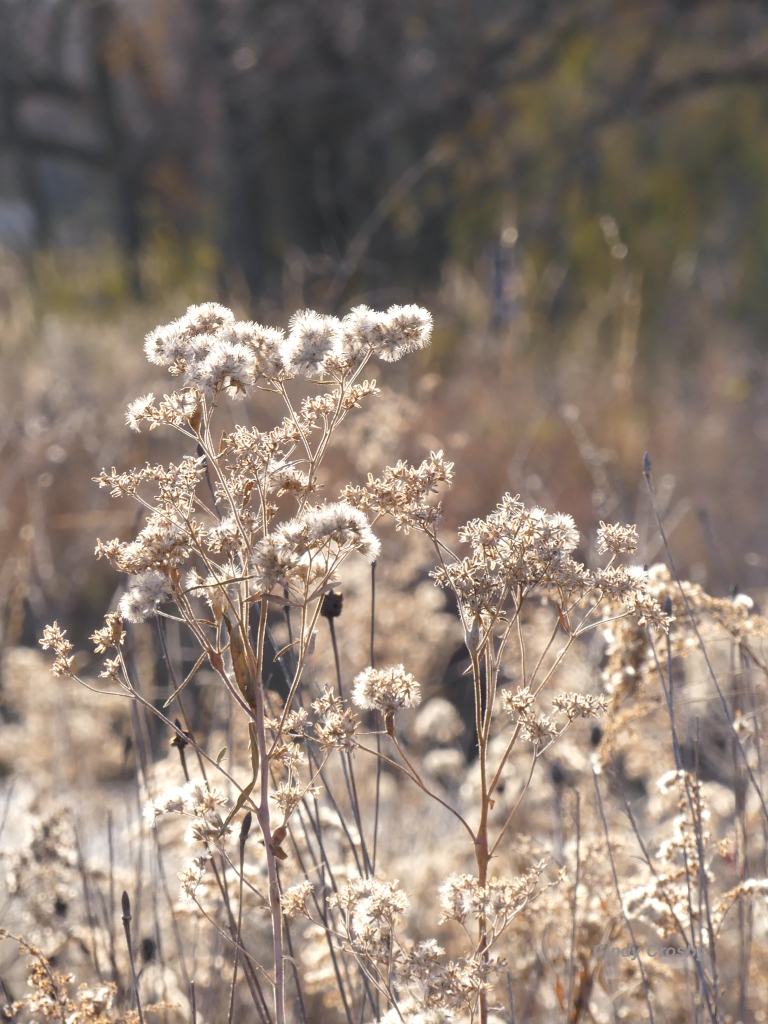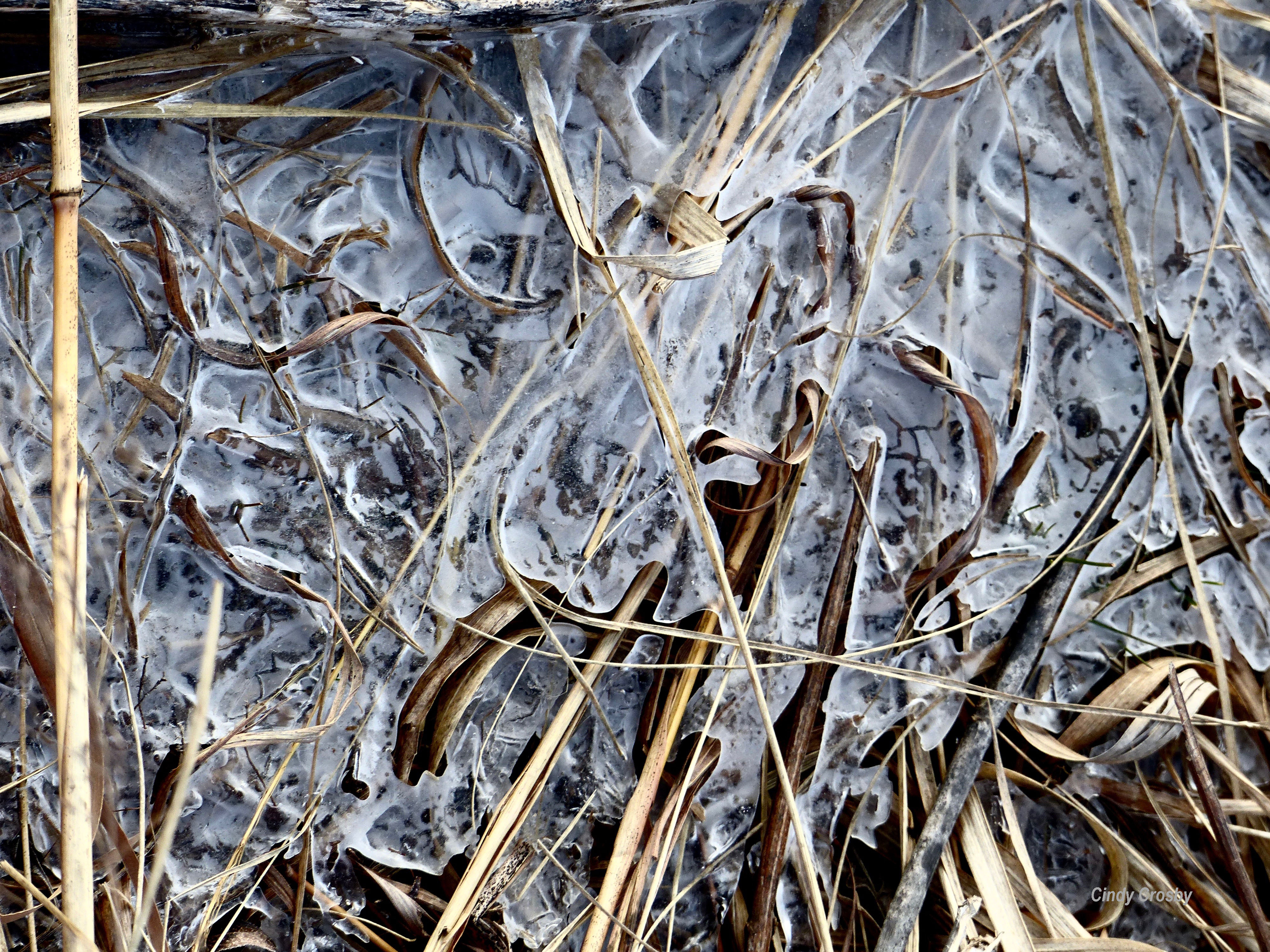“Just think of the stories these seeds are carrying.”—Diane Wilson
******
Lately I’ve been scanning my backyard, watching for pine siskins. Birding friends and my local Wild Birds Unlimited store staff tell me pine siskins have been sighted at numerous backyard bird feeders this autumn. In the Chicago region, they are an “irruptive” species. Which means? We don’t reliably have them each year. Sometimes they show up. Sometimes they don’t. So I check my backyard feeders regularly; scour the local prairies and savannas where I hike. No luck.

It’s possible we’ve had them in years past, and my eyes passed over them as one of our common backyard sparrows or finches. Kenn Kaufman calls them “a goldfinch in camouflage.” The Audubon Society notes the pine siskin’s song is that of a “hoarse goldfinch.”

You have to really pay attention to notice a pine siskin: the fine yellow under the wing; the streaky bird breast. I’m grateful to know they are close by—somewhere—and that if I keep an eye on my thistle feeder, I may see one. Eventually. Until then, I keep my feeders filled with thistle and sunflower seed chips, and my field guide on the kitchen counter open to the pine siskin page. Anticipating.
********
There were no pine siskins seen on my most recent hike, a late afternoon stroll across College of DuPage’s beautiful Russell R. Kirt Prairie. It’s just down the road from my house, and a favorite for a quick impulse walk.

My head has been full of planning for this week’s holiday gathering, when we’ll host family for several days. My mind spins with to-do lists, baking schedules, and finding enough of everything. What has happened to all the spoons? Bent, almost every one. (My bet is on late night ice cream sampling). What board games should we play after the big dinner?
I need a walk to clear my head.

I hop in the car and drive a short distance to College of DuPage in Glen Ellyn, IL the largest community college in Illinois with beautiful prairies planted all around.

The only other car in the lot is a friendly Glen Ellyn policeman, keeping an eye on the area. I wave, and check that it’s okay to park and hike today. Of course, he says. I’m off. College of DuPage has had more than 100 species of birds sighted in their ponds, prairies, and savannas. Maybe, today, there will be pine siskins.

It’s 2:30 p.m., but the sun is already low in the west. Daylight Savings Time has been a big adjustment this autumn, more than usual, and I’m not sure why. I’m grateful for the morning light but oh-my-oh-my these early darkening afternoons are lessening any motivation to do much.

I’ve always had an affinity for the prairie as it tucks itself in for the evening. It’s my favorite time to hike. While we’re still a few hours from sunset, all around, birds are chattering and pulling seeds from the prairie grasses, getting ready for the long darkness ahead. I see a small group of birds perched in a tree. Could it be…pine siskins? I zoom in with my camera.

Nope. Not even close. Just mourning doves. Nearby, a tree fills with starlings, their calls bright and loud.

Their chatter keeps me company.
I have mixed feelings about starlings, originally brought to the United States by an eccentric wealthy socialite who wanted to ensure our country had all the birds mentioned in the works of Shakespeare. Today, many people consider them pests. But even Cornell University’s “All About Birds” information on the species notes that, when given a close look, European starlings are “dazzling.”
Although I’m paying close attention to birds on this hike, I can’t help but admire the way the sinking sun backlights the prairie seeds.

So many different types of seeds.

Each plant has its own story of survival.

Each wildflower or grass carries a tale of how it has been used over time. Perhaps it was used medicinally, such as the wild bergamot, which contains thymol.

Some prairie plants were used as food that—when prepared correctly—sated people’s hunger. Others are symbolic, like big bluestem, our Illinois state grass.

Other prairie plants are promising as biofuels.

Several were used as textiles, like the Indian hemp. Its stems could be stripped, then used for fishing line, or string.

Oh, the stories these plants could tell!

I think about these plants and their histories as I watch a little flock of juncos and a tree sparrow ply the mown grass path for prairie seeds. It was not too long ago I learned that juncos are actually sparrows!

Cornell’s wonderful website, “All About Birds,” tells me dark-eyed juncos are “among the most abundant forest birds in North America.” This afternoon, they are among the most numerous birds I see on this prairie. Some people call them “snowbirds” because they appear in our region as heralds of cold weather. When we see the juncos, we know the warm season is drawing to a close, and winter is whispering in the wings.

The juncos fly up into the nearby trees at my approach, flashing their brilliant white tail feathers. I love these little birds, in their black and white plumage. As I follow their flight, I notice a slash of scarlet.

A northern cardinal sits in a leafless tree on the edge of the prairie. So pretty! I enjoy saying its scientific name “Cardinalis cardinalis.” So fun! Almost as enjoyable as saying “Bison bison.”
Fun, yes, but still…no pine siskins.
I inhale the crisp prairie air, and watch the clouds form and reform. Some clouds look almost braided. Others marble the blue. How does anyone get bored, with the skies changing from moment to moment?

Think of the time you could spend, walking and looking and admiring prairie wildflower and grasses seeds.

So many seeds. All so different.

All ready to start the first chapter of their new stories in the coming spring.
Wait! I see movement in a tree nearby. Could it be?

Foiled again. A red-bellied woodpecker. Not a pine siskin.
As I make my way back to the parking lot, I stop to catch my breath by the small pond. A few mallard ducks are doing their “bottoms up” trick. It always makes me smile.

I love this time of year on the prairie, when everything is winding down. The abundant seeds are there, each year, promising hope for the future. I’m grateful for that.

What a beautiful world it is. What simple pleasures are found all around us. In the skies. On the prairie.
I didn’t find what I went looking for. But sometimes, the joy is in the journey.

And after time outside, the stresses of the week seems manageable again. Prairie hikes have a way of doing this.

I’m grateful for all the prairie has offered me this year. I’m thankful for the months still ahead, and all the joys and discoveries yet to be made.

And maybe, just maybe as I’m baking the pumpkin and cherry pies, I’ll look out my kitchen windows and spy…some pine siskens.
Enjoy the holiday week ahead, friends! Thank you for reading.
*****
The opening quote is from The Seed Keeper, a lovely and heart-wrenching novel by Diane Wilson. She is also the author of Beloved Child: A Dakota Way of Life and Spirit Car: Journey to a Dakota Past. Wilson is a Mdewakanton descent, enrolled on the Rosebud Reservation, and lives in Shafer, Minnesota.
****
Join Cindy for a program as we close out 2023!
Friday, 12/1 — 10-11:30 a.m.: “Bison Tales and Tallgrass Trails” at the beautiful Morton Arboretum in Lisle, IL. (Please note! After selling out the program, The Morton Arboretum opened up a larger room, Cudahy Auditorium, next to the Sterling Morton Library, to accommodate more people. Registration is still limited, however. A book signing will follow the program, just in time for the holidays. To register, click here.)
12/12– 6:45-8 p.m.: “Winter Prairie Wonders” hosted by the Buffalo Grove Garden Club. Free and open to the public! For more information, click here.
More classes and programs are at www.cindycrosby.com .





















































 Look closely, and you may find a few tracks. Mammals are out and about in the cold. Birds. In my backyard, close to the prairie patch, we’ve been feeding the birds extra food during the bitter temperatures, and they, in turn, have graced us with color, motion, and beauty. As I scrubbed potatoes before having some friends over for dinner this weekend, my mundane task was made enjoyable by watching the interplay at the feeders outside my kitchen window. Scrubbing potatoes became meditation of sorts. Outside were squabbling sparrows. The occasional red-bellied woodpecker. Juncos–one of my favorites–nun-like in their black and white feathered habits. The occasional burst of cardinal color. Darting chickadees. Nuthatches, hanging upside down, zipping in for a peanut or two. Downy woodpeckers, like this one.
Look closely, and you may find a few tracks. Mammals are out and about in the cold. Birds. In my backyard, close to the prairie patch, we’ve been feeding the birds extra food during the bitter temperatures, and they, in turn, have graced us with color, motion, and beauty. As I scrubbed potatoes before having some friends over for dinner this weekend, my mundane task was made enjoyable by watching the interplay at the feeders outside my kitchen window. Scrubbing potatoes became meditation of sorts. Outside were squabbling sparrows. The occasional red-bellied woodpecker. Juncos–one of my favorites–nun-like in their black and white feathered habits. The occasional burst of cardinal color. Darting chickadees. Nuthatches, hanging upside down, zipping in for a peanut or two. Downy woodpeckers, like this one.




